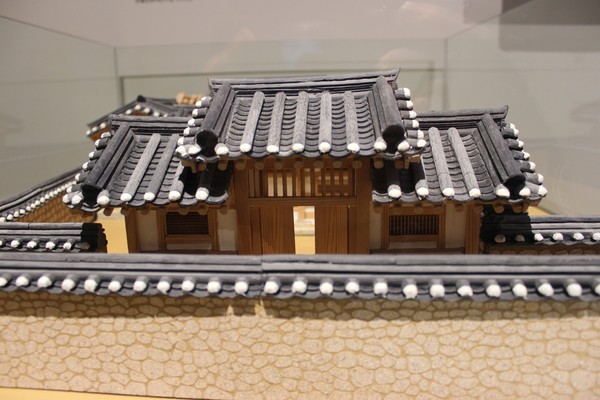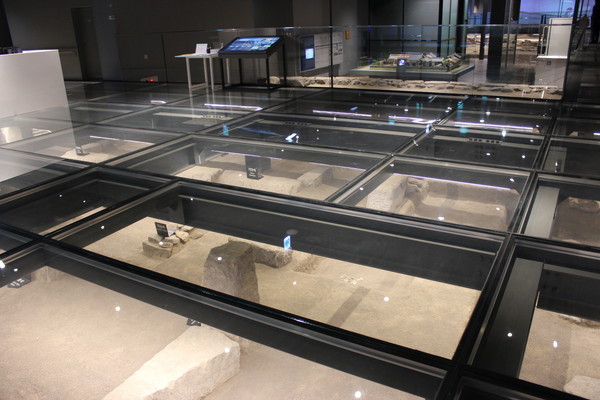The Houses of Gyeonpyeong-bang, Home for the Hanyang People

THE JOSEON dynasty sounds like a time that lay a great distance away from us and one that is impossible to revisit today. The nearest connection most people have had with the generation would be through Korean dramas or history channels on television. Experiencing a historical event through a secondary source can be quite underwhelming as you are restricted from perceiving the whole picture. The Gongpyeong Historic Sites Museum opened their latest exhibit, The Houses of Gyeonpyeong-bang, Home for the Hanyang People, to take visitors to a time when Seoul was called Hanyang during the Joseon dynasty. Through the excavated records of this era, the exhibit helps you understand the Hanyang lifestyle.

A guide to Hanyang
The Houses of Gyeonpyeong-bang, Home for the Hanyang People is an exhibit that allows you to experience Hanyang’s history and visualize the daily lives of people who lived in the capital of Joseon. The museum is located in Gongpyeong-dong, a section of land where the Gyeongpyeong-bang district of Hanyang was located. This part of the old city, buried under Seoul, roughly corresponds to the modern districts of Cheongjin-dong, Gongpyeong-dong, and Insa-dong.
As soon as you enter the museum, you walk atop glass floors that separate you from the ruins of the Large House of Jeon-dong. The Large House was one of the largest remaining buildings of the historic district, believed to have been a government office made of four separate units. Through the glass, you can see that the ground is littered with pieces of walls, floors, and roofing. To help visualize what these structures would be like, there are panels that describe each building. The area of the exhibition devoted to the Large House focuses on the building’s importance as the “economic and cultural hub of Hanyang[1].”
A Hanyang residence
The middle of the exhibit explores the architecture and construction process during the Joseon dynasty. The structure of Joseon dwellings is divided into three parts: giwa[2], sukchook[3], and changho fixtures[4]. The exhibit also displays a life-sized giwa model to show how the tiles are made from baked soil and later molded into either a flat or concave shape. The shapes of the traditional tiles allow for the roof to be covered with no gaps, ensuring a sturdy structure that can endure severe weather conditions.
As you progress further into the exhibition, different types of changho fixtures dug from historic sites are displayed. The diverse range of designs gives insight into how the people of Hanyang built their houses according to their economic and social status. Gyeongguk Daejeon, a complete code of law that comprised of the late Goryeo to early Joseon dynasty decrees, specified that all Hanyang house constructions must be executed in relation to status. The exhibit presents a panel with illustrations to outline the different social ranks along with the land area and house size they were granted. While underprivileged people built their houses with collected raw materials in a small space, rich people were granted an area that was approximately six times larger to build their houses.
Hanyang’s housing problems
As the floor nears you to the end of the exhibit, you notice more remnants of houses and potteries. As the new capital, Hanyang saw an almost 50% increase in its population during the Joseon dynasty within a century, from 228,270 people in 1669, to 304,549 people in 1777. Park Chae-ga, a Joseon diplomat and scholar, commented on the growing prosperity of the city. “I traveled one after another old city, but there was no place where its landscape surpassed Hanyang[…] Prosperity of goods, relatives and friends, and literature necessary for study are all gathered here.” With Gyeonpyeong-bang being at the heart of Hanyang, the district became home to many people. Soon enough, middle-class merchants who ran a sijeon, known as a licensed store, began to settle near the main roads of Gyeonpyeong-bang. The merchants’ houses were larger in size because they combined their business area and residential facilities for their families. The sudden stream of individuals resulted in a rapid surge of housing shortages.
Furthermore, because the possession of land was dependent on social status, large swathes of land were given to generals and princesses to construct their mansions, and the commoners were left with predominantly smaller lands. The increasing number of large mansions led to a rapid decrease in workable land. However, people were reluctant to reside in the outskirts of the city, where there was little arable land due to years of battle. Determined to live inside the capital, commoners began to illegally settle onto the hills bordering the city. Despite the royal injunction to establish more residential land, the crisis continued.
* * *
The moment you set your foot inside The Houses of Gyeonpyeong-bang, Home for the Hanyang People, get ready for a grand tour through Seoul’s history[5]. The simple yet detailed organization of the exhibit will give you a comprehensive guide from residency to the daily lives and hardships of the Hanyang citizens.
Period: 2020. 11. 13 – 2021. 05. 02 (closes on Mondays of each month)
Hours: 09:00 – 18:00 (last entry: 17:30 p.m.)
Admission fee: Free
Location: Gongpyeong Historic Sites Museum Exhibition Room (Seoul Jongro-gu, Gongpyeong-dong 17)
[1] Director of the Seoul Museum of History, Bae Hyun-sook
[2] Giwa: Roof tiles
[3] Sukchook: A stone embankment
[4] Changho: Metal bars for windows and doors
[5] The museum has organized a virtual reality exhibition for visitors who are unable to visit Korea during the pandemic; visitors can meet the online experience at https://museum.seoul.go.kr/

